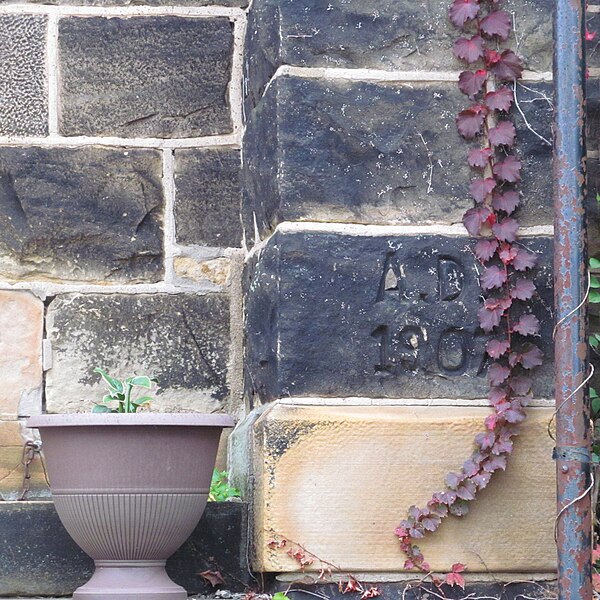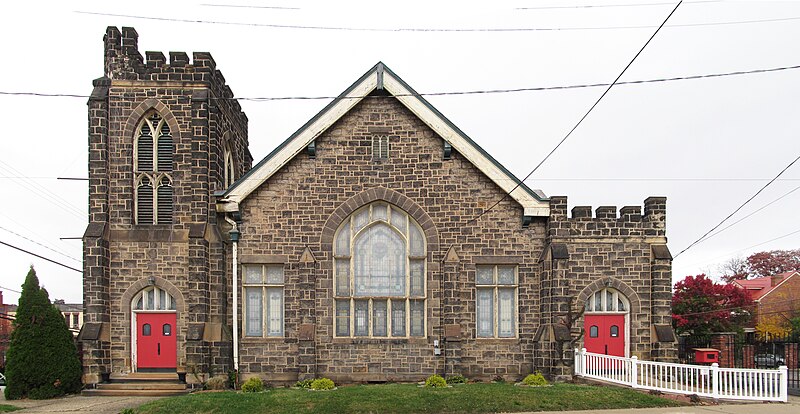
Edward J. Carlisle was the architect of this school, built in 1897 in a very Victorian Gothic style.



The building is preserved because it has been worked into a senior citizens’ home.

We are used to seeing Trinity Cathedral from the Sixth Avenue front. At the rear of the lot on Oliver Avenue is a complex of buildings that form a Perpendicular Gothic wall along the street. The Parish House in the middle was designed by Carpenter & Crocker; and since the parts all match in style, we may attribute the whole complex to the same architects with some confidence. The treatment of the broad late-English-Gothic arches is very similar to that on Carpenter & Crocker’s Church of the Holy Cross in Homewood.


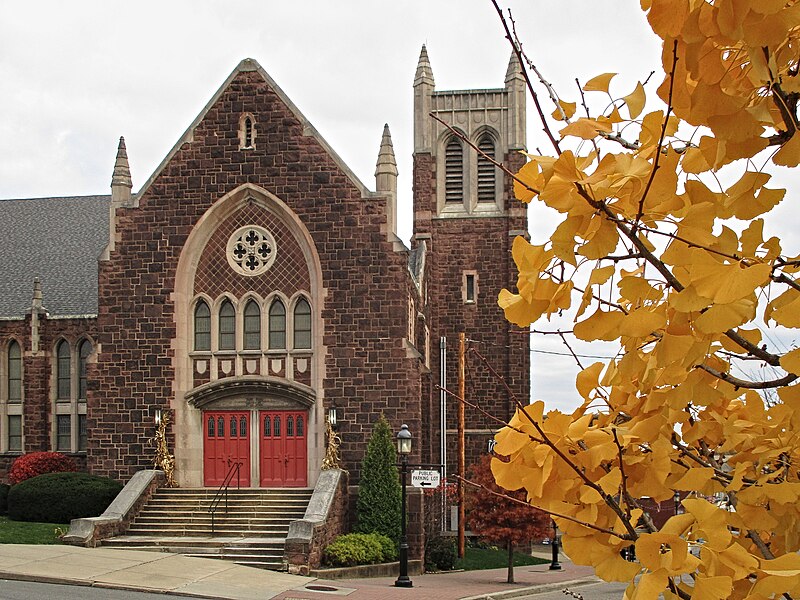
We have seen this especially fine church before, but since old Pa Pitt was out walking on Potomac Avenue in early-evening light, he decided that we could see it again. It is now the Dormont campus of the nondenominational North Way Christian Community, which fortunately has the money to keep up the exterior.

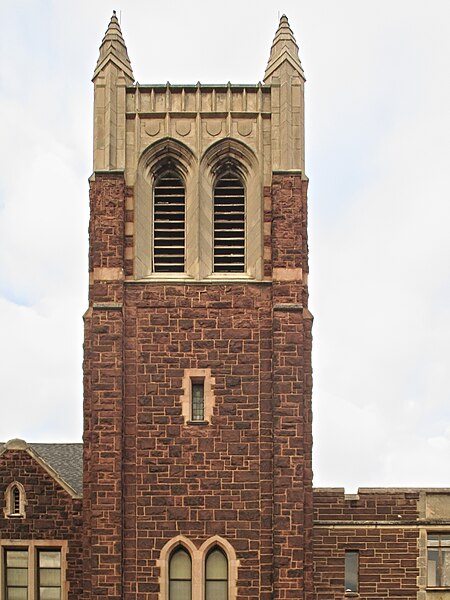
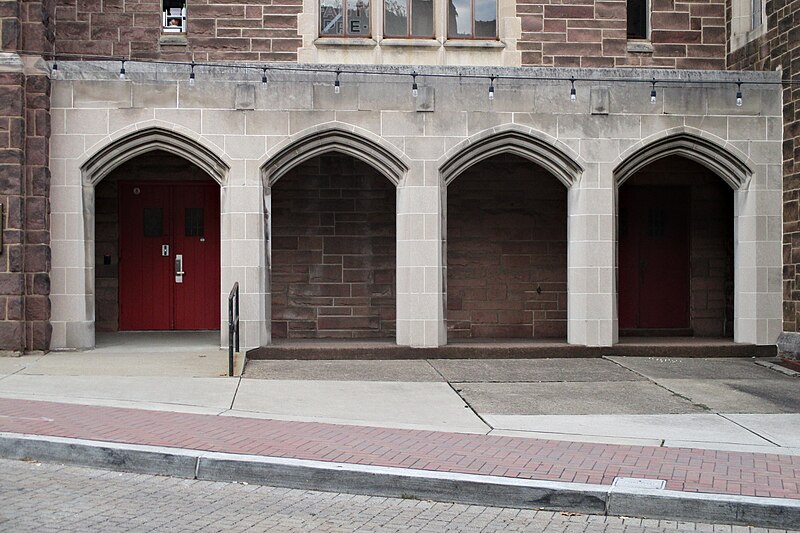


The parsonage is just the sort of elegant and respectable dwelling you need for your Presbyterian minister. With a broad English Gothic arch at the entrance to link it to the church, it makes a good transition between the monumental church and the prosperous merchant-class houses on Espy Avenue.
Addendum: Father Pitt tentatively attributes the church to Chauncey W. Hodgdon. Mr. Hodgdon was hired to supervise alterations in 1914, and it was considered unethical for another architect to alter or add to a building within a few years of its construction unless the original one refused, or was unavailable, or was rejected by the client.

Edmund B. Lang1 designed this church for a Slovak congregation in the McKees Rocks Bottoms; it was built in about 1914.2 The church is not a church any longer, but it has been in use as an antiques auction gallery and thus has not been allowed to decay too badly. Through the magic of twenty-first-century technology, we can see the whole front of the church, right up to the cross on the steeple, almost the way the architect saw it in his imagination, although he probably was not imagining those utility cables draped across the front of the picture.


Lord & Burnham designed Phipps Conservatory in 1892, which was probably their biggest commission ever; and in this 1896 advertisement for their services, we see them showing a model conservatory that is very much like one of the wings of Phipps.


The September 1915 issue of The Builder published this picture of the Concord Presbyterian Church in Carrick, along with this description:
An interesting building, published in this issue, built after the style of the early English Parish Church, and executed in that character exceptionally well both interior and exterior.
The exterior of the Church is of Rubble Masonry which as a material blends well with the immediate surroundings, the site being on Brownsville Road, Carrick, and of a rural atmosphere. The interior (as the interior of the early English Parish Church) is carried out in a very simple but dignified design, of plaster and timber, finished in a warm color scheme.
The Church has a seating capacity of 500, the Sunday School accommodating 450.
The architect, as the page with the photograph above tells us, was George H. Schwan. Although the immediate surroundings were “of a rural atmosphere” in 1915, they would not remain that way for long. Already in the photograph above you can see the great engine of urbanization: streetcar tracks.

This is the way the church looks today, with its early-settler country churchyard behind it and the decidedly non-rural business district of Carrick in front of it. More pictures of the Concord Presbyterian Church are here.

This church has a complicated history that perhaps someone from Brighton Heights could help old Pa Pitt sort out. It was built in 1907 as a Congregational church, replacing an earlier frame building. By 1923 it was the Eleventh United Presbyterian Church. Now it belongs to the Greater Allen African Methodist Episcopal congregation, which has kept it in beautifully original shape, right down to the uncleaned black stones, which Father Pitt loves.
